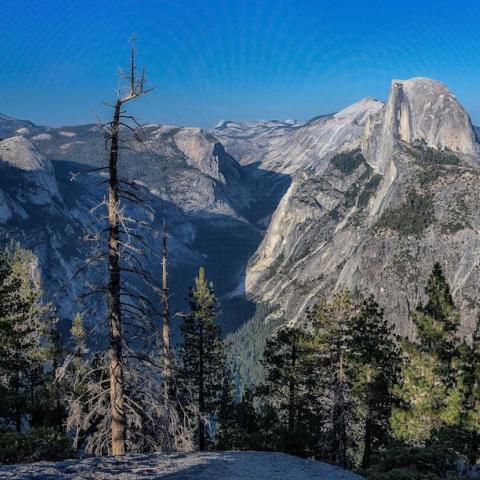
Researcher Sidney Woodruff holds a Northwestern pond turtle at a field site in Yosemite National Park/UC Davis
A cacophony of croaking bullfrogs under a dark night sky might seem like one of nature's sweetest sounds.
But not so much for turtles in Yosemite National Park.
A new study shows a negative correlation between native Northwestern pond turtles in the park and the presence of invasive American bullfrogs.
“One reason American bullfrogs are among the top worst globally introduced pests is because they eat everything — anything that fits into their mouth,” senior study author Brian Todd, a professor at the University of California, Davis, said in a news release.
That includes Northwestern pond turtles, which together with Southwestern pond turtles are California's only native freshwater turtles.
“If it disappears, we have no other freshwater turtles that are supposed to be here," Todd said. "It’s part of our natural heritage.”
In Yosemite, pond turtles are found in the Tuolumne River and in several spots in the northwestern part of the park.
The study monitored Northwestern pond turtle populations from 2016 to 2022 at four sites in Yosemite - two with bullfrogs present and two without.
The researchers found that turtles were between two and 100 times more abundant in the no-bullfrog zones. The only turtles found where bullfrogs were present were older ones too large to fit in a bullfrog's mouth. That suggested that younger turtles weren't surviving.
Once bullfrogs were nearly eradicated from the sites in 2019, scientists saw juvenile turtles return to those areas.
Other species bounced back, too.
“As bullfrog presence declined, we started to hear other native frogs call and see native salamanders walking around,” said UC Davis doctoral candidate and study lead author Sidney Woodruff. “It’s nice to be able to go back to these sites and hear a chorus of native frogs calling again that previously would not have been heard.”
The research, which also included scientists from the National Park Service and the U.S. Geological Survey, was published in the May edition of the journal Biological Conservation.




 Support Essential Coverage of Essential Places
Support Essential Coverage of Essential Places






